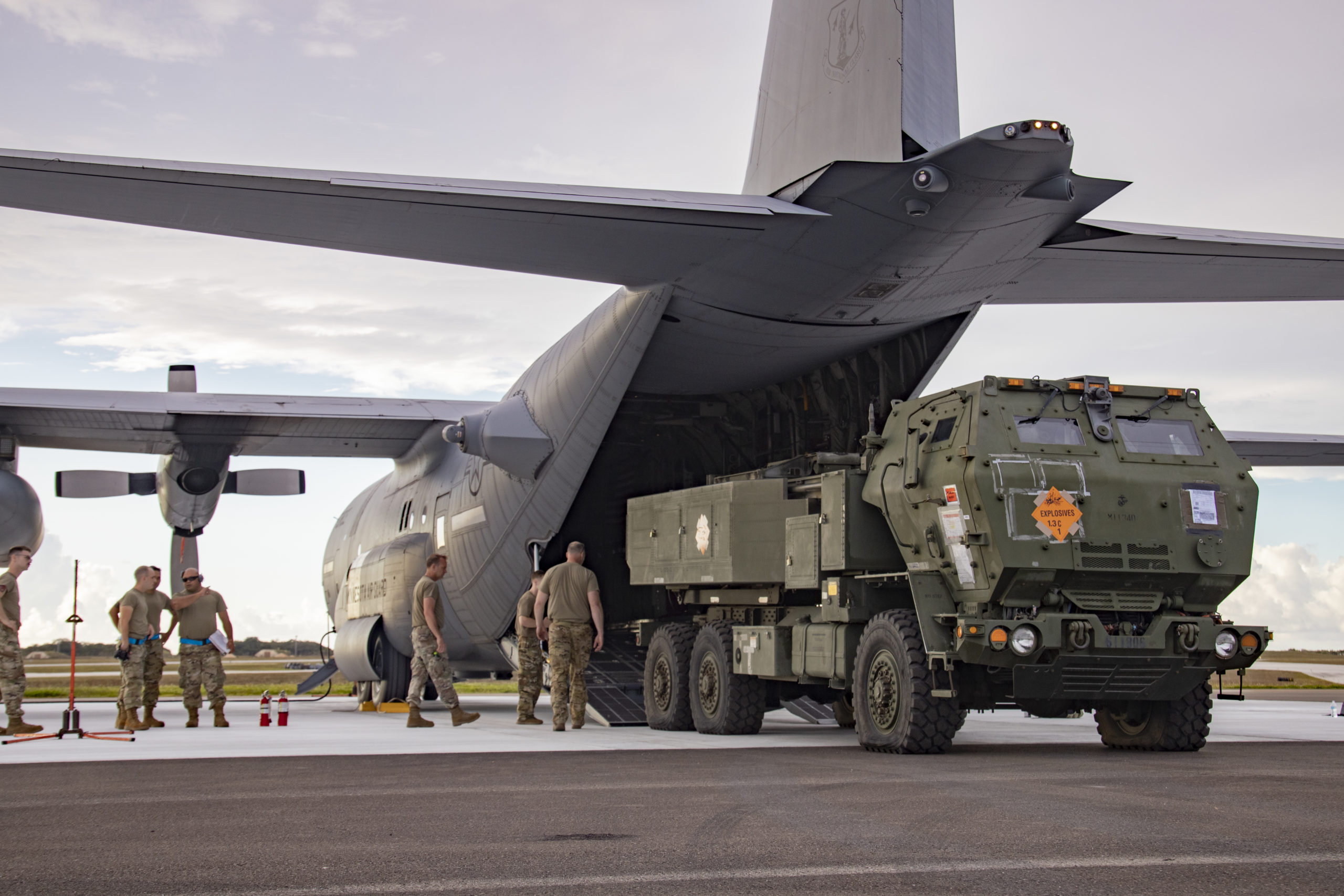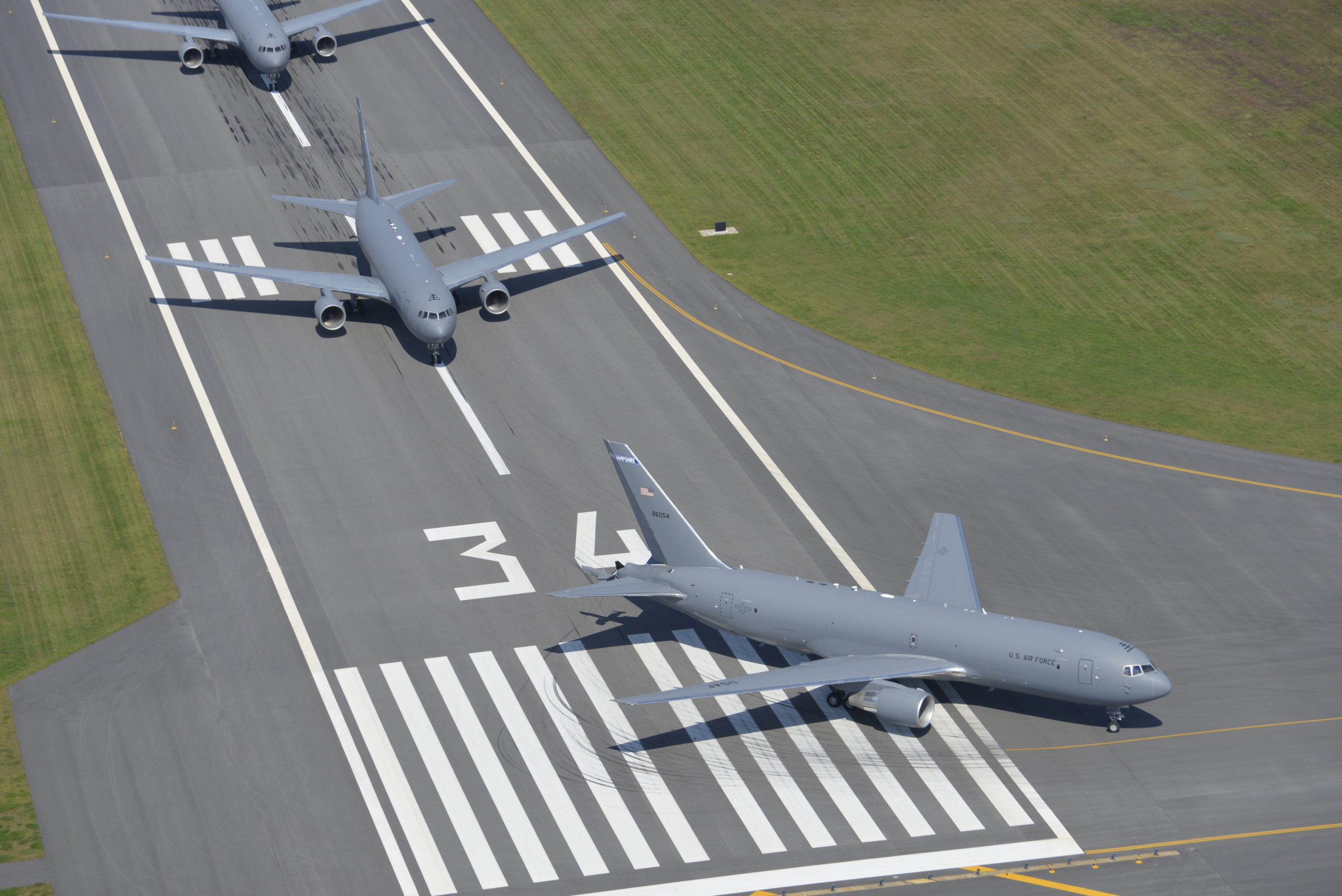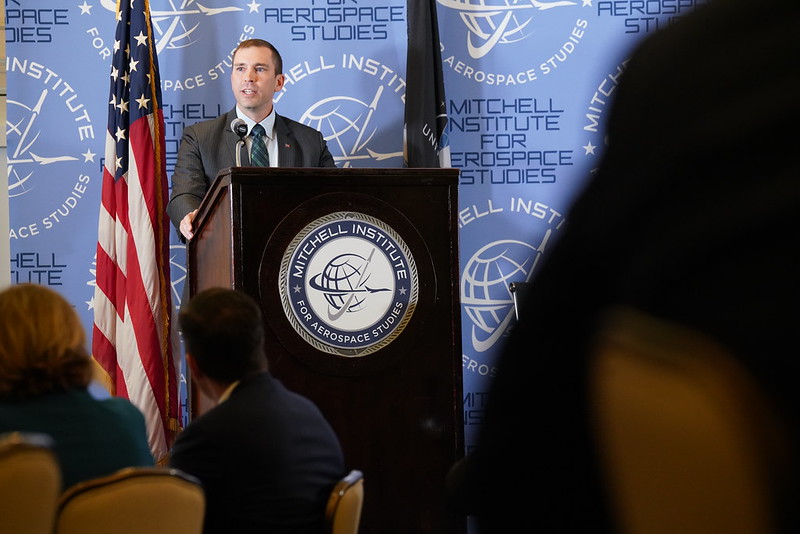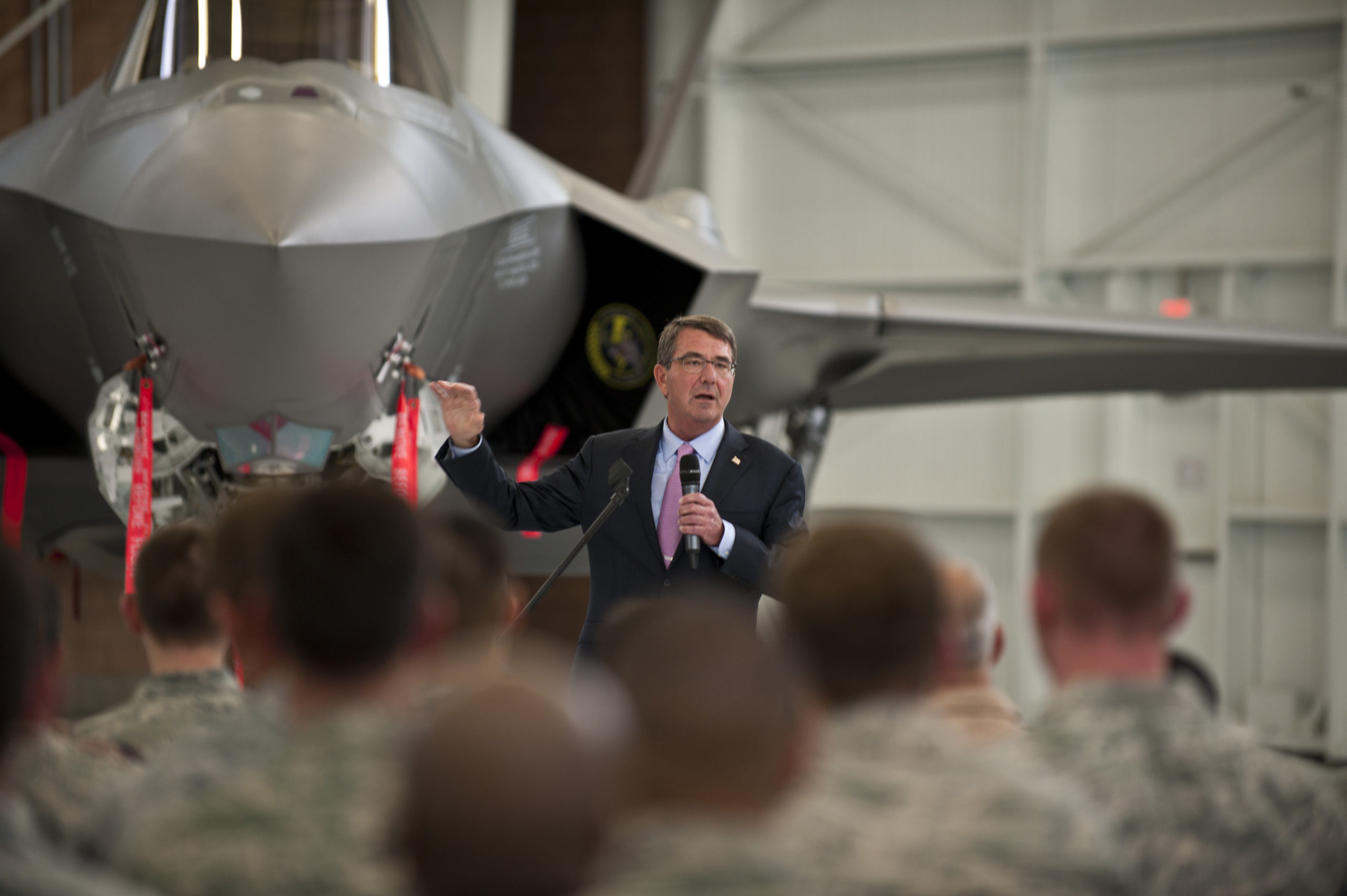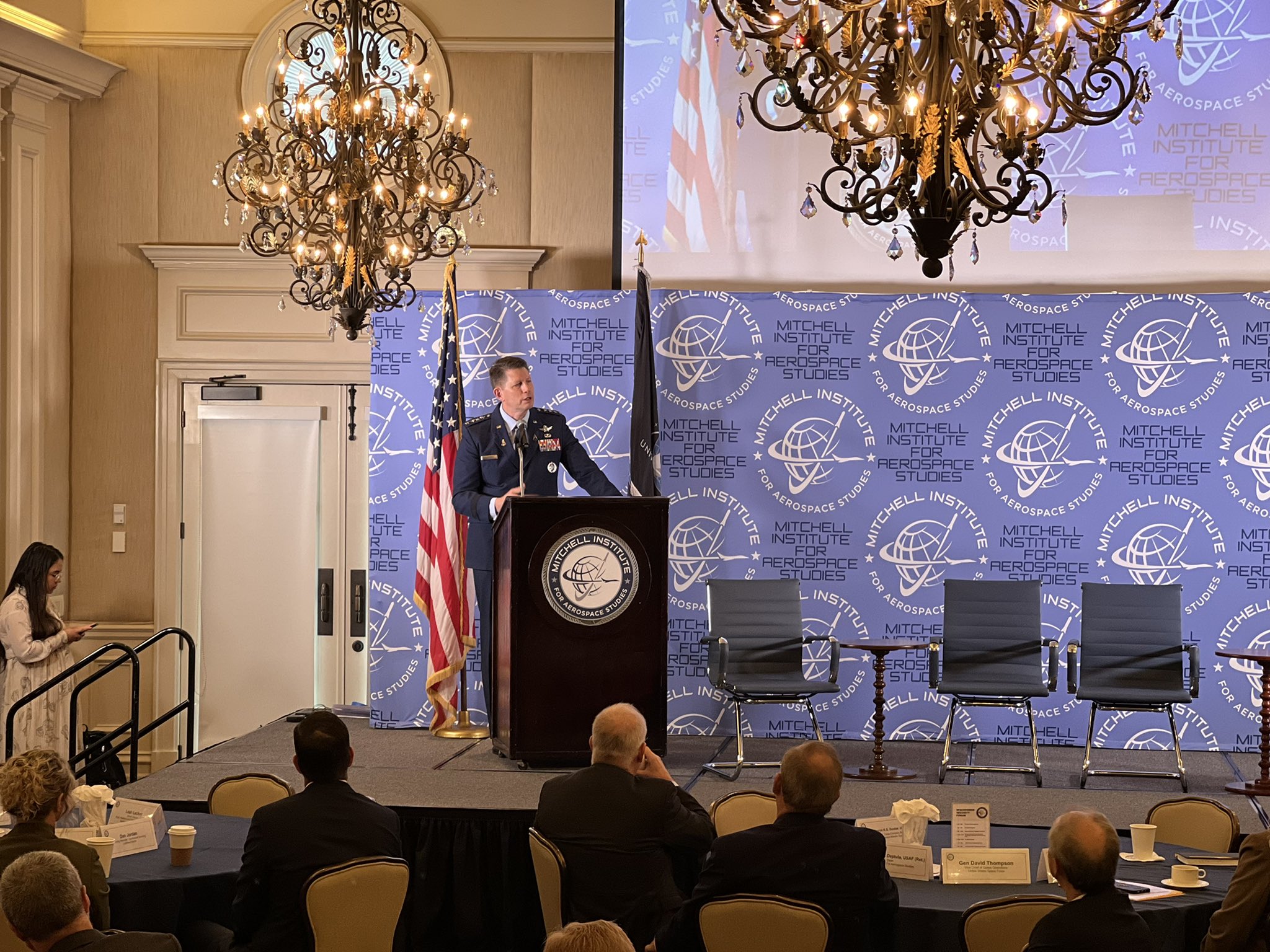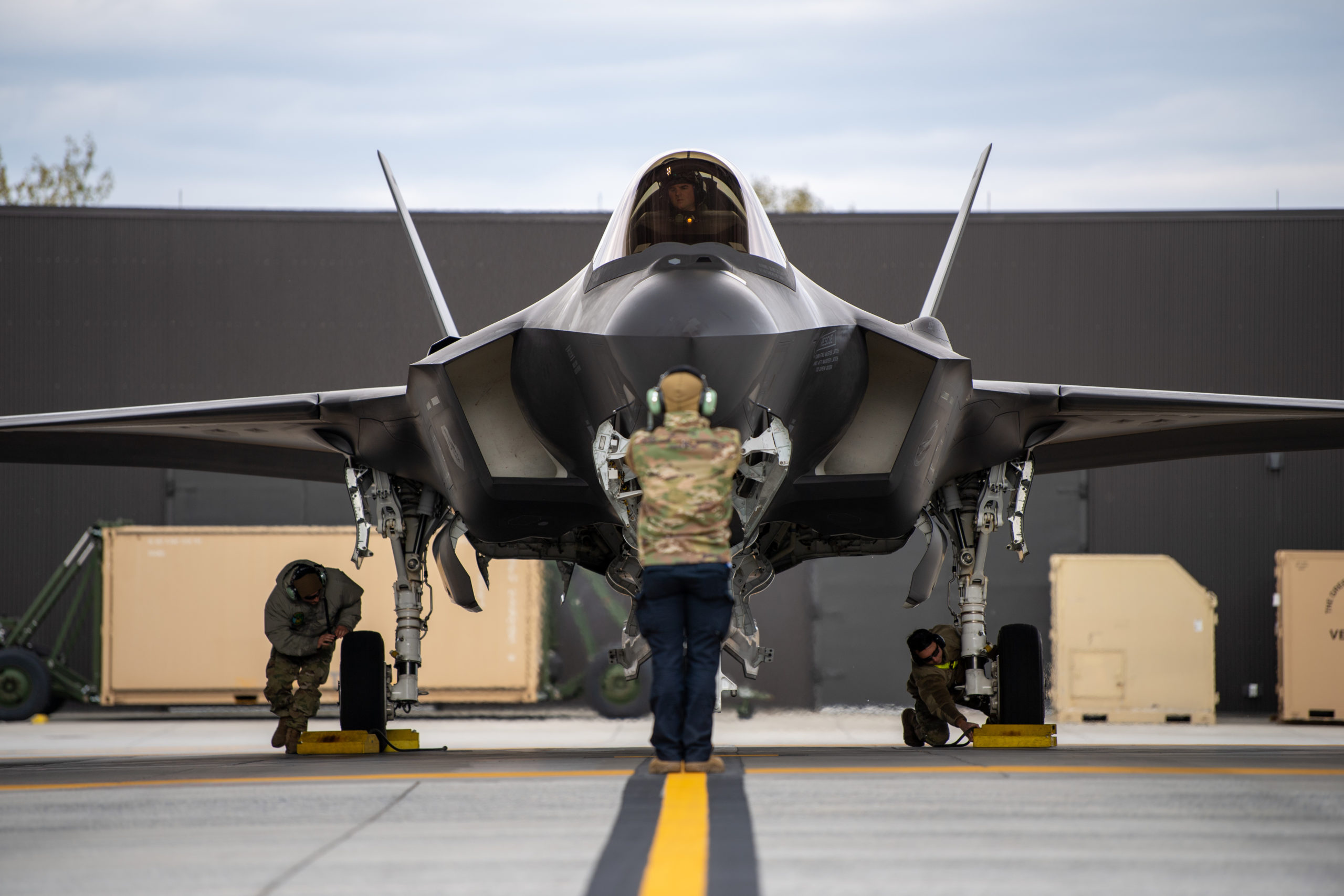One of the biggest lessons to emerge from the war in Ukraine is that weapons that are in production constitute a credible threat to adversaries, whereas weapons that are merely experimental—or are not actually being made in numbers—are not, according to William LaPlante, the Pentagon’s head of acquisition and sustainment. He said those lessons “amplify” the priorities his organization is pursuing.
“Production is deterrence,” LaPlante asserted at an acquisition seminar sponsored by the Potomac Officers Club in Tysons, Va., on Oct. 26.
Guiding his decisions during his term as the No. 3 executive at the Pentagon, he said, is the urgency of the China threat and providing equipment that’s useful in “a real, high-end fight” such that the U.S. can back up its rhetoric with relevant hardware in the hands of operators.
LaPlante said China has been gaining on the U.S. for 20 years in military technology and that the situation is “bad in space, bad in cyber, bad in EW [electronic warfare].” Ukraine has driven home the reality that “we can’t just think of [high-end warfare] as something that might happen five or 10 years from now,” but potentially in the “next year, or next month … That’s the takeaway.”
China is “really good” at modern warfare, he said. “They can do the kill chain. They’ve figured that out.” He said that “anybody who says … ’it’s not as bad as you think’—you’re wrong.”
For LaPlante, “All that matters is getting [equipment] to warfighters at scale,” he said. “If you don’t get into production, it really doesn’t matter. That’s one thing that’s hit home” as a result of the Ukraine war.
Deterrence is based on “the three C’s,” he said: “communication, capability and credibility.” It’s essential that “the other side”—whoever that is in a given situation—“understands what you mean and intend,” he said.
“If you say, ‘we’re going to hold them at risk,’” it has to be backed up with the goods, LaPlante asserted. He later added that “deterrence does work. It’s working right now with NATO and Ukraine. NATO is not at war. Hopefully it will not be at war. But I think part of deterrence is also production lines.”
In space, for example, “if the adversary can see that you can produce smallsats off the line in a couple of days, so that if they take out a hundred of them, you can put up another hundred of them in three weeks, that’s deterrence.”
With Ukraine, the conversation has turned to “how many more precision weapons do the Russians have? How many more do we have? Once you realize that a country can keep going into its magazine, and has production, that’s deterrence.”
The war has also illustrated that “You can’t predict ahead of time what you’re going to need. You can try, but you’ll be wrong half the time.” He said, “Who’d have thought in 2022 that we’d need Stingers, right? That production line stopped in 2008.” Similarly, the M142 High Mobility Artillery Rocket System (HIMARS) was last in production from 2014 to 2017, and the U.S. is drawing down its stocks rapidly in providing the weapon to Ukraine. After the war against ISIS, the perceived need for AGM-114 Hellfire missiles was also deemed to have fallen.
“So be humble about predicting what you think you’re going to need. What you have to do is hedge your bets,” LaPlante said.
That means the U.S. is going to have to keep production of some systems going even when stockpiles are solid, and “we’re going to have to pay for it,” he said.
LaPLante noted that “we’ve gone to this just-in-time delivery [scheme] like Wal-Mart … Don’t have any inventory; ‘inventory is waste.’ Cut out redundancy, tooth to tail. Remember all this? Well, what could go wrong there? Nothing … until we have Ukraine.” In that fight, “if you can’t get something in three years, nobody cares.”
The Pentagon needs to remind itself “that the resiliency of the industrial base means you have to pay for it; you have to plan for it, and you have to be willing to put in place measures that you might not even be able to prove” will ever result in being used.
However, regardless of the theater, he said, integrated air and missile defenses are going to be key. Ukraine, with the help of its partners, has “MacGyvered” several kinds of sensors with weapons to produce functional air defenses, he said. But it needs more.
Regarding new weapons, LaPlante called himself “a nerd. I love prototypes. [They’re] interesting. They’re fun for all of us in Nerdville. But it doesn’t really help the warfighter … So I’ve really been focused on delivering … capabilities.”
He said he’s glad to see the Pentagon doing more prototyping and experimentation, as “we were not doing very much of that back in 2014-15 when I last served. Now, to everyone’s credit, there’s so much going on.” But he added that there’s “an excess of it, really.”
Regarding hypersonics, for example, he said, “the ugly truth is … we’ve never been in production with hypersonics in this country, ever. Hypersonics have been in the [science and technology] world for forever—60 years. It’s been the ‘weapon of the future’ for 60 years. Whereas the Russians and Chinese are in production.”
He admitted that “I’m going to be tuning out when you talk about doing a test” of a hypersonic system by the Air Force Research Laboratory, DARPA, etc. “When you get into production, then I’m going to start paying attention.”
His second priority is delivering capabilities “in a way that’s sustainable and cost-effective.” He said it’s “well known” that 70 percent of a weapon’s lifecycle costs are in sustainment, and the support system has to be there if they are to work.
And, “it doesn’t matter if you can’t train to it,” LaPLante said.
He emphasized that it no longer makes sense to think of the defense industrial base as separate from that of the rest of U.S. industrial base. They are one and the same, he said, and the Pentagon must use all the sources it can to achieve its goals.
Finally, he said he’s been concentrating on “workforce, tools, and education,” but acknowledged that the Ukraine situation has consumed “about half” his time since taking up the post in April.
Referring to the weapons provided to Ukraine, LaPlante also pointed out, “The stuff works. For all the criticism we give ourselves, the stuff works, and it works really very well.” The world has seen that, and there is also deterrence in that fact, he said.
With HIMARS, “it takes three 18- to 20-year-olds, not trained very much, to use it, and it’s very powerful.”
